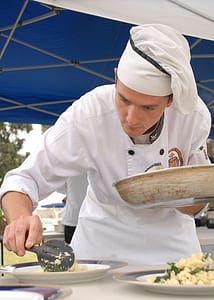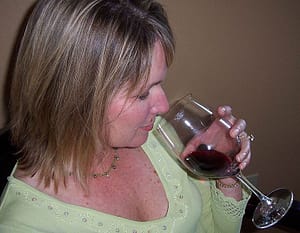
22 Aug the sensory experience of food
What is it that makes the experience of eating so pleasurable?

The old adage of the kitchen: we eat first with our eyes

Our eyes take in 12 million pieces of information every second. So they are the primary sense through which we find meaning in the world. Interestingly, a study has shown that seeing food, can reduce the consumption of the food, which doesn’t make any sense, really! However the study showed that if a person were to imagine eating three m and m’s they consumed more of the m and m’s at the end of the experiment, than a person who had imagined eating 30 m and m’s. This showed that imagining a satiation point meant that participants consumed less when allowed to do so.
Do food producers try to manipulate our senses in order to get us to consume more of a food?
A beverage manufacturer may employ a tasting panel to taste versions of a product with more or less sugar. If there is too little sugar or too much sugar the beverage will not delight the senses, however at the point when the sugar concentration creates a pleasant sensation (called the ‘bliss point’) most of the panel will report a favourable sensation and then the manufacturer can produce the beverage with this amount of sugar.
There is also a percentage variation of the compound (be it sugar, fat or salt), where people will not notice the difference, and the point when people do notice the difference is called the ‘just noticeable difference’ (jnd).
The jnd can applied to the perceived value for money of the product, and if the cost of an ingredient of production rises, the manufacturer can use this information to either increase the retail price, or reduce the amount of the product and increase the amount of packaging.
It is debatable whether any of these forms of sensory psychology are ethical.
How does the sense of smell affect our sensory experience of food?

It is funny how we so often confuse the sense of smell and taste in food eating. Say for example with vanilla, which we say smells sweet, although it tastes sweet, we can’t smell sweet.
Wine and coffee are purported to smell so amazing because they have 300 or more olfactory compounds, when they are served, which intoxicates the senses and makes that first sniff of coffee so delectable.
Do we have different taste receptors in different areas of the tongue?
It used to be believed that different areas of the tongue were sensitive to different tastes, sweet at the tip, and salt at either side of the tip, sour further along the sides, and bitter at the back. This theory has been rubbished in recent years, and now it is thought that we have taste buds all over the tongue, which are receptors for all the variety of different tastes.
Apparently the most sensory rich experience of food occurs just as we swallow, which is why wine makers endeavour to make wines with a ‘long finish’.

No Comments